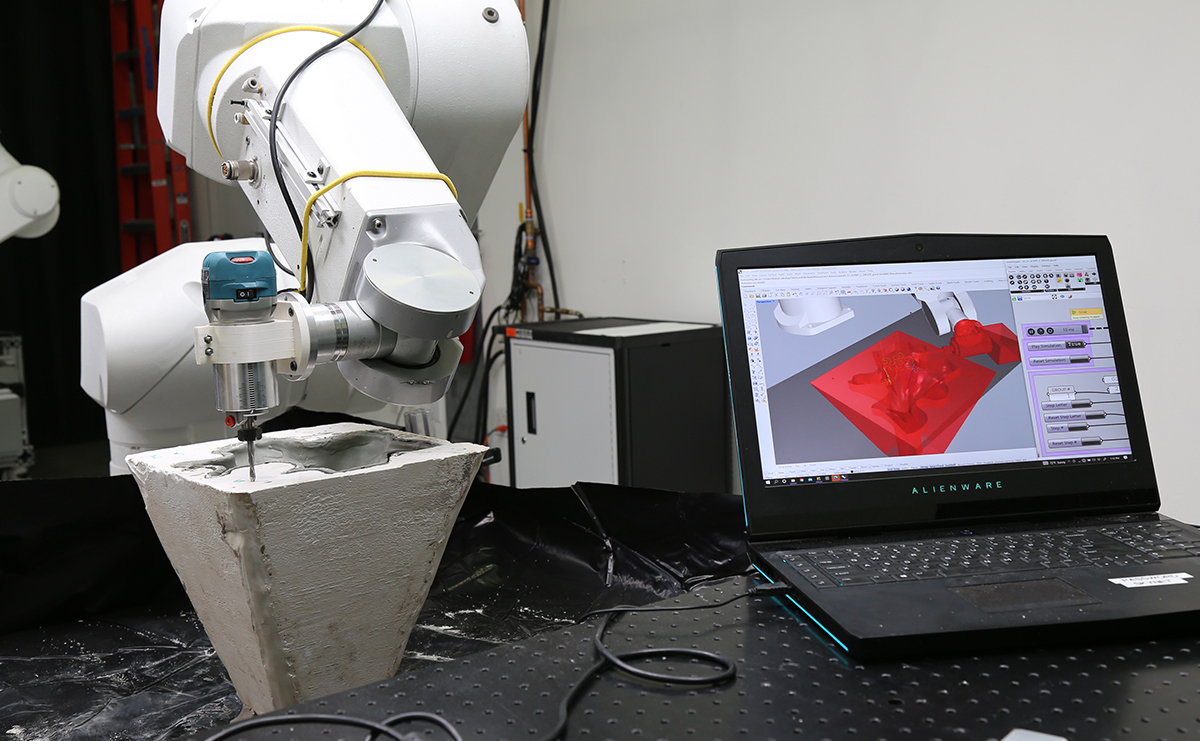
1.5C Architecture Against Climate Change | Project 3
Robotic Ceramics
Recent estimates hold the construction and building industries responsible for nearly 38% of the global energy-related emissions currently fueling catastrophic changes to our climate. In the wake of this fact, the global impact of what we design and how we build has become the center of Architectural discussion.
1.5°C explored this topic by investigating the potential of design, technology, and new materiality in Architecture as a means of aiding the global fight against environmental warming and accelerating climate change. This course evaluated design at the confluence of sustainable materials (ceramic, low-carbon, etc) and robotics with emphasis on emerging fabrication techniques, synthetic ecology, and net zero Architecture.
1.5°C explored this topic by investigating the potential of design, technology, and new materiality in Architecture as a means of aiding the global fight against environmental warming and accelerating climate change. This course evaluated design at the confluence of sustainable materials (ceramic, low-carbon, etc) and robotics with emphasis on emerging fabrication techniques, synthetic ecology, and net zero Architecture.
Project Description:
The group explored different technological applications to mitigate the urban heat island effects leading to low humidity. These technologies are porous and bioreceptive ceramics that absorb water and allow evapotranspiration by supporting moss growth to passively humidify the indoor of the building.
Low humidity can affect a person’s physical health. The types of impacts affect skin conditions, poor nasal cavities, respiratory illnesses, airborne pathogens, and odors. Los Angeles’ aridity comes despite being located along the largest body of water in the world. The cold water from the Pacific ocean doesn’t evaporate easily, therefore not contributing to humidity and giving LA that perfect weather.
The group viewed mechanical and biological methods of sustainable technology to address low humidity. The mechanical intervention consists of the water retaining ceramic bodies where moss is strategically attached making them bio receptive components. Water sits and shifts specifically in the bulbous spaces that are etched and are carved in concave shapes systematically. Biological techniques to reduce the low humidity is represented in the systematic approach to how water transits through components on the facade and how the moss attaches to the components individually.
The group explored different technological applications to mitigate the urban heat island effects leading to low humidity. These technologies are porous and bioreceptive ceramics that absorb water and allow evapotranspiration by supporting moss growth to passively humidify the indoor of the building.
Low humidity can affect a person’s physical health. The types of impacts affect skin conditions, poor nasal cavities, respiratory illnesses, airborne pathogens, and odors. Los Angeles’ aridity comes despite being located along the largest body of water in the world. The cold water from the Pacific ocean doesn’t evaporate easily, therefore not contributing to humidity and giving LA that perfect weather.
The group viewed mechanical and biological methods of sustainable technology to address low humidity. The mechanical intervention consists of the water retaining ceramic bodies where moss is strategically attached making them bio receptive components. Water sits and shifts specifically in the bulbous spaces that are etched and are carved in concave shapes systematically. Biological techniques to reduce the low humidity is represented in the systematic approach to how water transits through components on the facade and how the moss attaches to the components individually.
- SEE LESS TEXT
PROJECT STATS
Client: SCI-Arc | Adv. Robotic Fabrication Seminar
Completion Date: 2022
Built: Prototype Constructed
Material: Ceramic - Stoneware, glaze
Involvement: Instructors: Herwig Baumgartner & Garrett Sutherlin Santo
Team: Ghanim Alghanim, Sherefah Alhamdan, Abdulrahman AlKhudhari, Nicolas Barreda, Angelina Castagnola, Astha Kapila
BACK TO TOP
